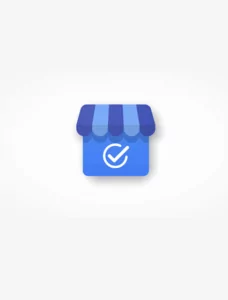
- Red Search
- Resources
- Google Penguin
Google Penguin: Everything You Need to Know
-
 Daniel Law
Daniel Law
Since Google’s Penguin Update in 2012, the SEO landscape has shifted from manipulative link building schemes to favouring ethical and sustainable practices.
After several Penguin updates, Google eventually fused the Penguin algorithm into its Core Algorithm, allowing it to evaluate sites in real time.
This post will walk you through Google Penguin’s history and everything you need to know about how this algorithm update works.
Google Penguin in a Nutshell
In April 2012, Google rolled out the webspam algorithm update, also called the Penguin Update. Google left no word about the update’s title but reported that it targets manipulative link building schemes and link spam.
Before the algorithm’s rollout, link volume significantly impacted a website’s ability to rank well.
Back then, websites with poor content and tons of low-quality links could rank higher than they actually should, paving the way for spammers to capitalise on short-term rankings.
Why Google Needed the Penguin Algorithm
The search engine confirmed that Penguin was developed to work with Google Panda in tackling low-quality content, webspam, and black hat SEO.
Google designed the Penguin algorithm to understand and evaluate the types of backlinks pointing to websites and respond to the rampant practice of search ranking manipulation and black-hat link building strategies.
Penguin’s primary objective is to control black-hat spamming practices and significantly reduce their effectiveness. It rewards pages with natural, relevant, and authoritative incoming links and penalises those with manipulative links.
Google Penguin Updates
The Penguin algorithm underwent several updates and improvements before it was merged into the Core Algorithm.
Here is a quick rundown on its key updates and refreshes:
Google Penguin 1.1 (March 2012)
After the algorithm’s rollout, Google executed the first algorithm refresh on March 26, 2012. All websites affected during the initial rollout that actively cleaned up their link profile would have likely seen a recovery. Consequently, any websites that were still practising link schemes were penalised.
Google Penguin 1.2 (October 2012)
The second wave of data refresh occurred on October 5, 2012. This time, Penguin affected roughly 0.3% of English search queries.
Google Penguin 2.0 (May 2013)
Penguin 2.0 was a significantly advanced algorithm update that impacted as much as 2.3% of all English search queries and other languages. This update allowed Penguin to look beyond a website’s top-level pages and scour deeper for link spam pointing to the website.
Google Penguin 2.1 (October 2013)
Penguin 2.0 only saw one data refresh on October 4, 2013, affecting 1% of search queries. The 2.1 update didn’t include any changelogs, but the SEO community is confident that it improved Penguin’s ability to crawl deeper into a website for spammy links.
Google Penguin 3.0 (October 2014)
The algorithm took another data refresh on October 17, 2014, known as the third major Penguin update. The data refresh affected 1% of Google searches in the English language.
Google Penguin 4.0 (September 2016)
Two years after Penguin 3.0, the final algorithm update took off. Google Penguin 4.0’s most prominent change is that it became a part of Google’s Core Algorithm. At this point, data refresh no longer occurs during Penguin updates but in real time.
Moreover, Penguin will now devalue spammy links instead of punishing the pages. Any ranking pages with link schemes will only get ignored for indexing instead of getting restricted from search results.
Triggers for Penguin Algorithm
Google Penguin is now integrated into Google’s Core Algorithm and evaluates websites for the following webspam practices:
Link Schemes
By definition, link schemes are link building techniques that tamper with and manipulate PageRank, manipulating Google’s search results. It also includes Paid Links, where a website buys third-party links from totally unrelated and low-quality sites.
Google considers link schemes a violation of the Webmaster Guidelines, including any practice that aims to manipulate inbound and outbound links to and from your website.
Anchor Text Over Optimisation
Anchor texts are words that are contained in any given hyperlink. SEOs often include their target or partial keywords in the anchor text when trying to optimise and rank for a chosen keyword.
To over-optimise anchor text essentially means that the target keyword is included excessively in the overall amount of backlinks the page receives. Google views over optimised anchor texts as a form of manipulation and is considered unnatural.
During the first releases of Penguin, many websites that were excessively abusing anchor text optimisation saw an algorithmic penalty take place.
Google Penguin’s Impact and Penalty
According to Matt Cutts, Penguin’s first launch in 2012 affected as much as 3% of Google SERPs. But since it wasn’t yet a part of the core, websites would only notice a change whenever Penguin was updated.
That means you’ll have to wait 6 months to 2 years to recover from Penguin-related penalties.
Now that Penguin is integrated into the core algorithm, it crawls and evaluates link spam in real time. If you’re working hard to recover your lost rankings, you will notice faster results, though you may not return to your rank before a Penguin hit.
Additionally, a Penguin penalty differs from a manual penalty. The algorithm automatically devalues link schemes and removes their ability to rank. On the other hand, when a Google reviewer detects webspam on your site, they can take manual action to remove your page from ranking SERPs.
Google Webmaster Trends Analyst, John Mueller, stated that 301 and 302 redirects won’t remove Penguin’s impact on a page. Moreover, Penguin-related penalties pass across domains, so migration and redirects can cause more SEO concerns if not done seamlessly.
John also advised against using meta-refresh redirects as users and bots could mistake those as attempted redirects – which can cause UX and crawl complications.
How to Recover from Penguin Penalty
SEO specialists who have been around since 2012 know that manually removing spammy links or disavowing offending links through Google’s Disavow Tool is one of the most fundamental ways to recover from a link-based penalty.
Google recommends that all websites proceed with caution when using the Disavow tool. Incorrect usage may include your website to lose its rankings.
Another approach is to outreach to the offending websites manually and kindly request that they remove your link. For a large website, you may need help in facilitating this process. If this is the case, an experienced SEO agency may help.
Google Penguin Myths & Misconceptions
Over the years, the SEO community had different opinions and misconceptions about how Penguin works and how to benefit from it. With Google’s subsequent algorithm updates and a highly competitive search landscape, expect some myths to pop out – and Penguin is no exemption.
Here are some Google Penguin myths and misconceptions to shed light and clear your confusion.
Myth: Google Penguin Downgrade Is a Manual Penalty
Some see a Penguin penalty as being a manual penalty, and not algorithmic. This isn’t the case and since Google has integrated Penguin into their Core Algorithmic, all link-related penalties are purely algorithm-based.
Myth: Google Notifies Websites if Penguin Hits Them
Another myth around Penguin is that it notifies the webmaster upon detecting any red flag on the webpage.
But this is false.
Google Search Console would not inform your site if Google Penguin negatively impacted your search ranking. On the other hand, Google’s Webspam team will notify your site in case of a manual penalty.
Myth: You Can Recover Lost Rankings by Disavowing Links
Disavowing bad links will help your website, but it can only save you from getting devalued, and not climbing back up the ranks.
Google rewards websites that consist of high-quality content and backlinks. So we recommend earning backlinks from authoritative sites and capitalising on building your brand’s E-A-T.
Myth: A Website Can’t Recover From a Penguin Hit
Another Penguin misconception is that the consequences are permanent.
This is far from the truth.
A well-prepared recovery plan backed by sufficient data is key to working out exactly what caused the penalty and can set your website on the road back into Google’s good books.
Google Penguin & Core Algorithm: The Bottomline
There’s no direct reason for referencing Google Penguin in this day; however, understanding how the algorithm update has evolved is certainly useful in helping shape modern link building strategies.
If Google’s Core Algorithm update has impacted your website and you believe it’s link-related, speak to our experienced SEO experts today.
Written by





